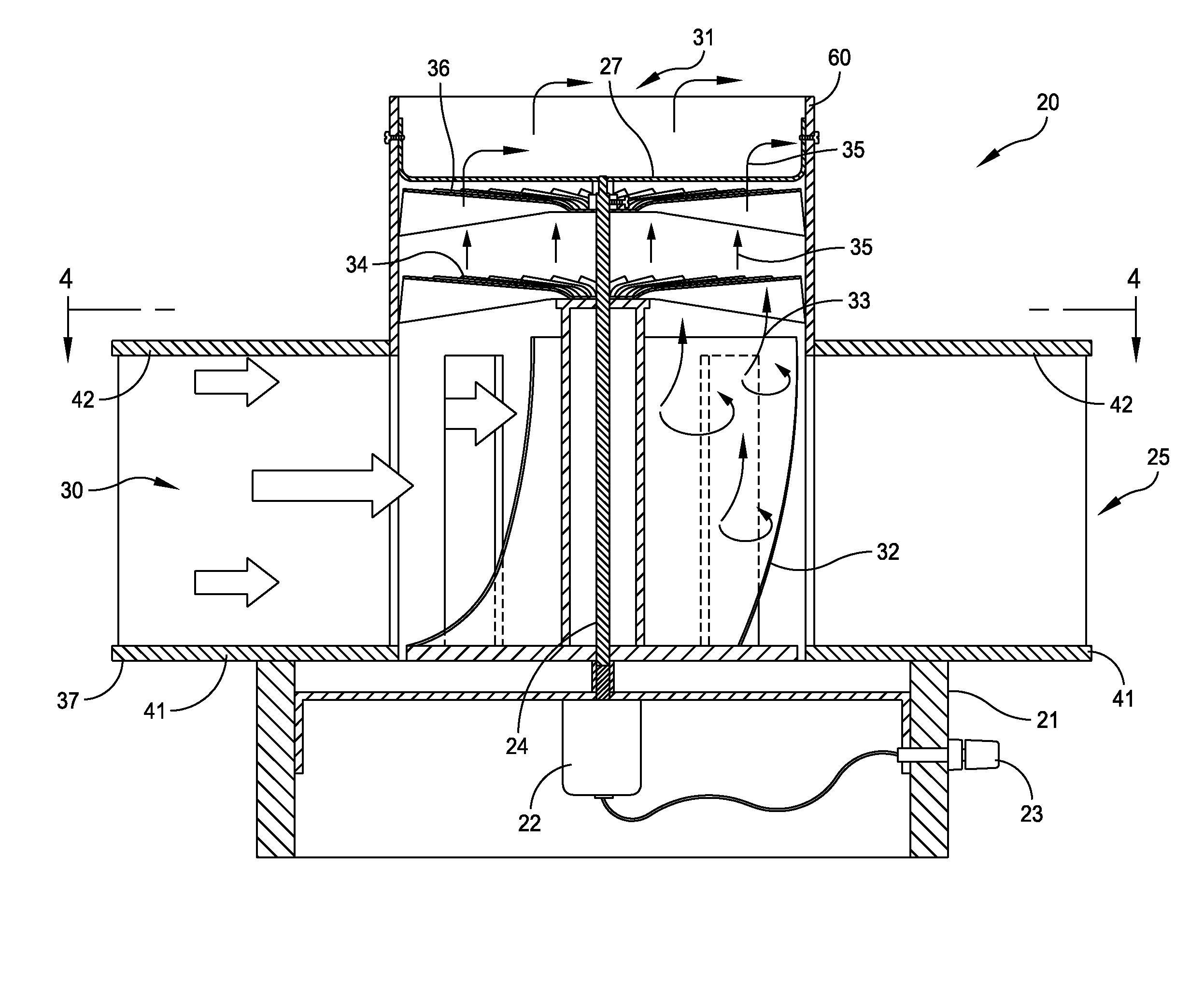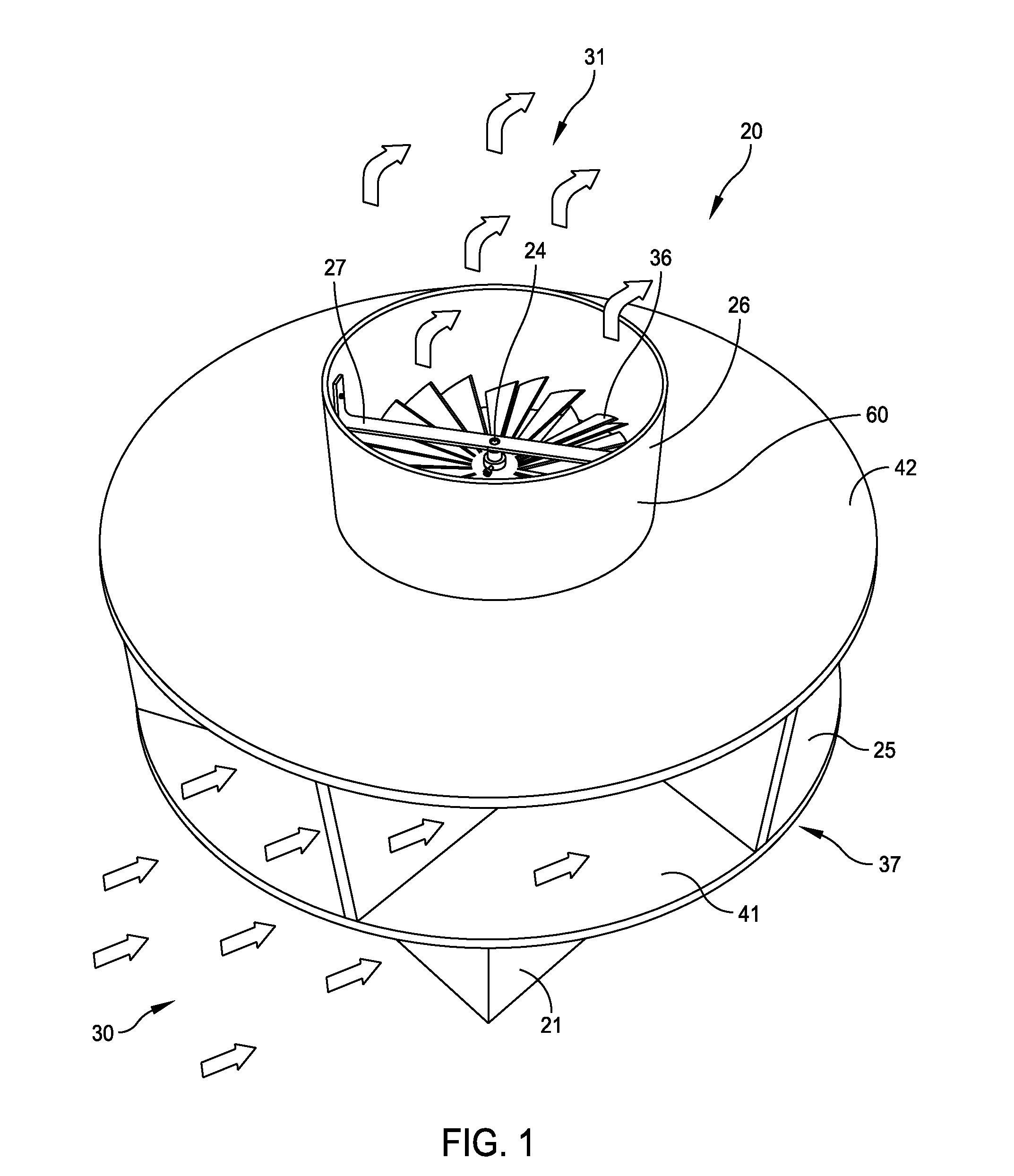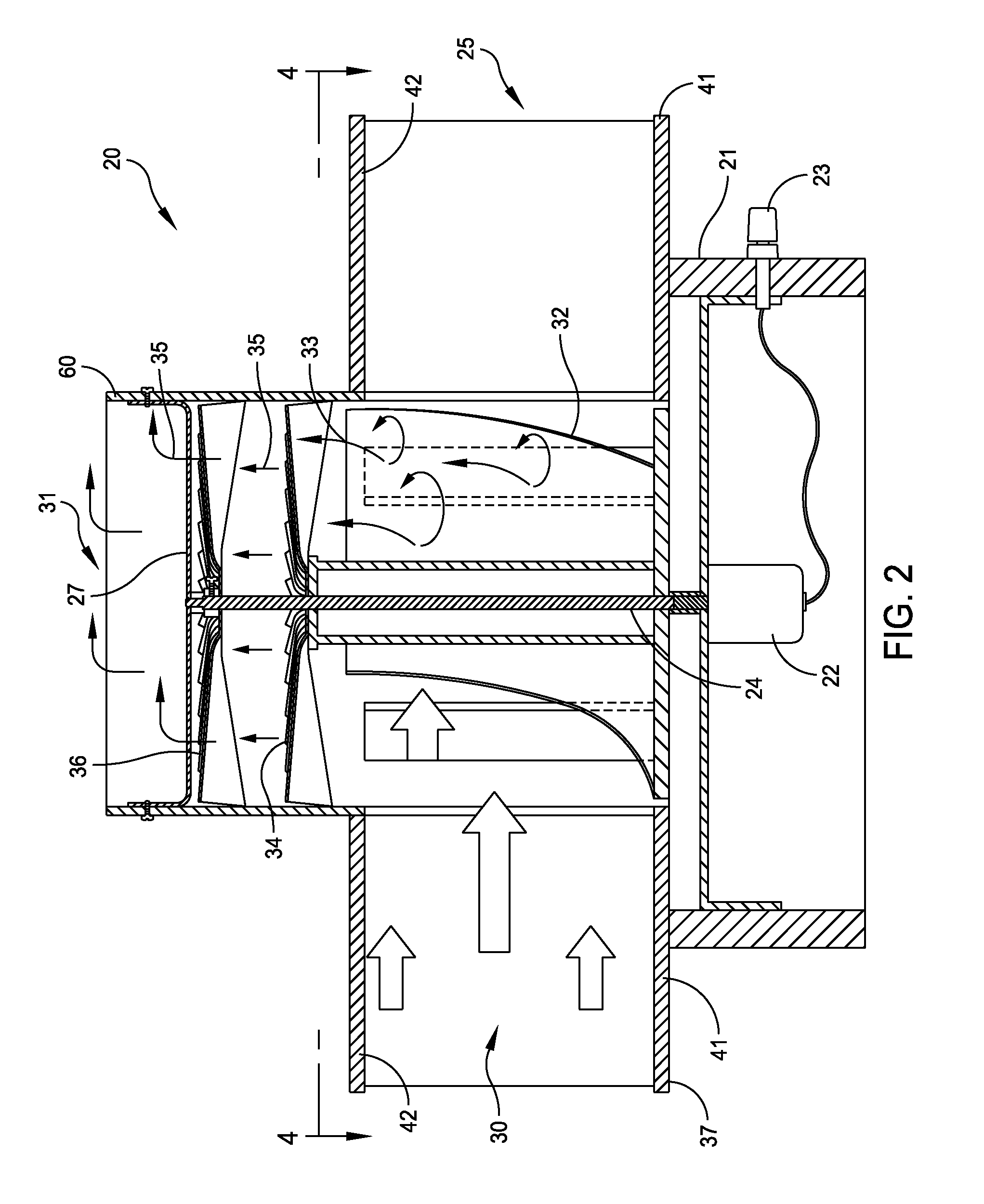Omnidirectional vertical-axis wind turbine
a vertical-axis, wind turbine technology, applied in the direction of renewable energy generation, machines/engines, climate sustainability, etc., can solve the problems of reducing the overall efficiency of the system, requiring significant power to align such a rotating mass, and uni-directional conventional windmills, so as to achieve the effect of maximizing the extraction of wind energy
- Summary
- Abstract
- Description
- Claims
- Application Information
AI Technical Summary
Benefits of technology
Problems solved by technology
Method used
Image
Examples
Embodiment Construction
[0026]FIGS. 1 and 2 are perspective and cross-sectional views of one embodiment 20 of a two-stage omnidirectional vertical-axis wind turbine embodying this invention. A base 21 supports the wind turbine on some supporting foundation (not shown). In this embodiment the base 21 also supports a variable speed, constant frequency electric power generator 22 connected to external power connection 23. Specific examples of such variable speed, constant frequency power generation equipment and any other mechanical utilization devices are well known in the art and will be selected based upon well-known design parameters.
[0027]The base 21 supports a first, or lower, chamber 25 and a second, or upper, chamber 26. A vertical shaft 24 extends from the electric power generator 22 through the first chamber 25 into the second chamber 26 to be supported by an end structure represented as a transverse bracket 27 attached to the walls of the second chamber 26.
[0028]In broad terms, as inlet wind 30 ent...
PUM
 Login to View More
Login to View More Abstract
Description
Claims
Application Information
 Login to View More
Login to View More - R&D
- Intellectual Property
- Life Sciences
- Materials
- Tech Scout
- Unparalleled Data Quality
- Higher Quality Content
- 60% Fewer Hallucinations
Browse by: Latest US Patents, China's latest patents, Technical Efficacy Thesaurus, Application Domain, Technology Topic, Popular Technical Reports.
© 2025 PatSnap. All rights reserved.Legal|Privacy policy|Modern Slavery Act Transparency Statement|Sitemap|About US| Contact US: help@patsnap.com



